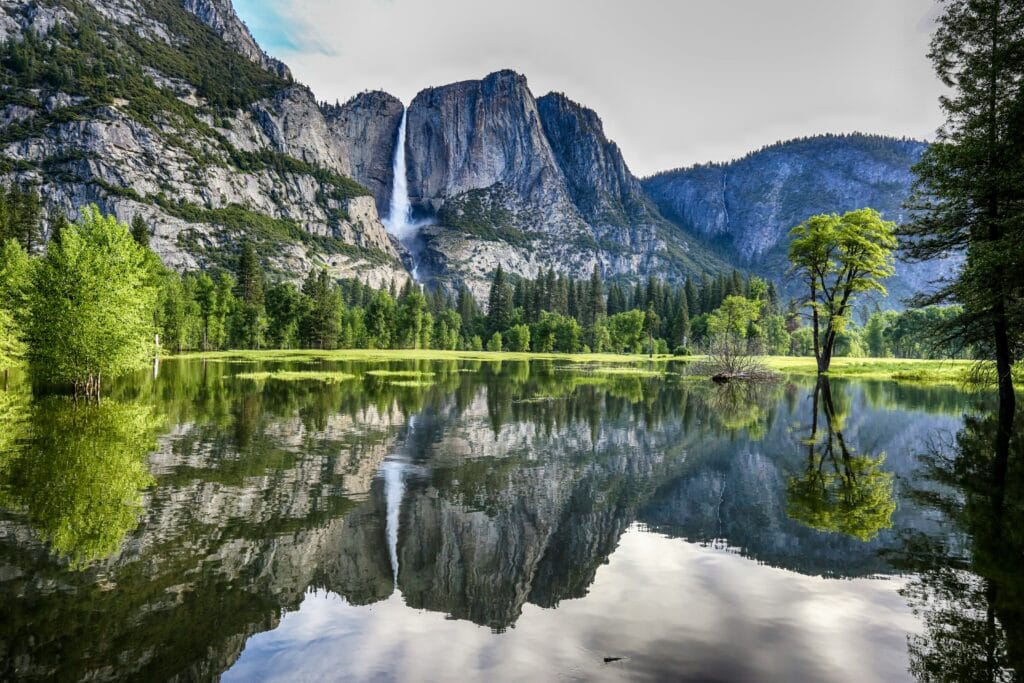The best hikes and adventure hiking trails in the US offer miles of scenic beauty, ranging from mountain summits to deep canyons and lush forests. With so many hiking destinations to choose from, it can be hard to know where to start. Whether a person seeks a quick day hike or a multi-day trek, there are trails that will fit their needs and help them discover America’s top landscapes.
Many hikers look for unique and memorable experiences. Paths like the John Muir Trail in California, the Teton Crest Trail in Wyoming, and the Enchantment Lakes trail in Washington are just a few favorites featured on expert lists such as the 33 Must-Do Treks. These routes are known for their stunning views and a chance to truly connect with nature.
Key Takeaways
- The United States is home to remarkable hiking destinations.
- Iconic and adventure trails can be found in many regions.
- Planning ahead helps hikers make the most of their trips.
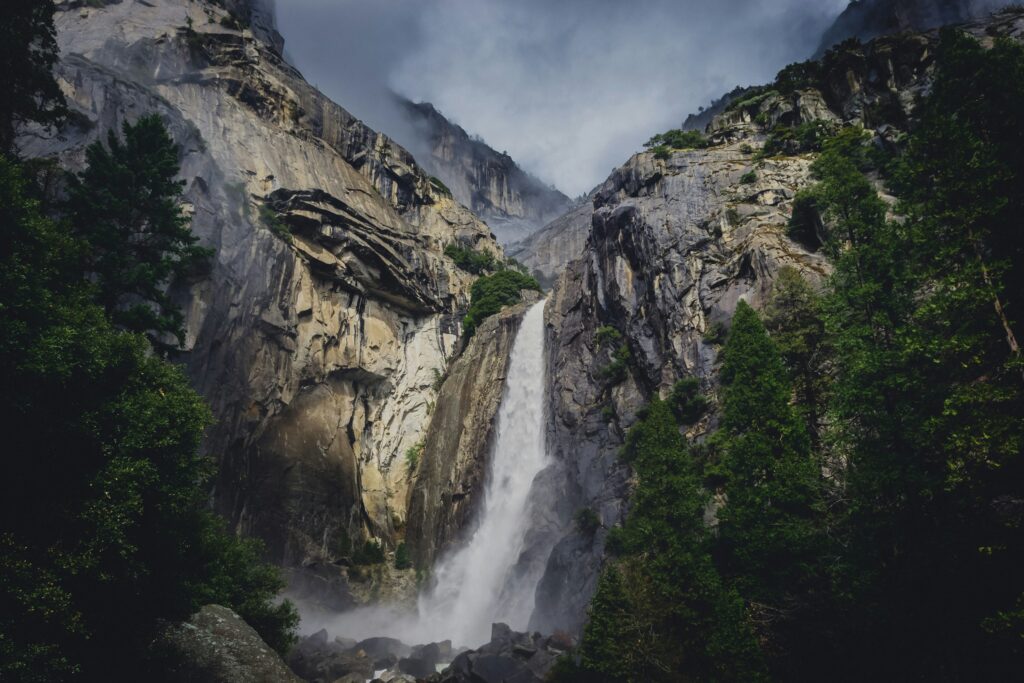
Iconic Hiking Destinations in the USA
Across the United States, several national parks offer unforgettable hiking experiences. Trails here range from challenging summit climbs to scenic river walks, featuring famous landmarks and impressive natural sights.
Yosemite National Park
Yosemite National Park in California is known for its granite cliffs, giant sequoias, and striking waterfalls. The most famous hike is the Half Dome Trail, which is about 14 to 16 miles round trip. This route is challenging and includes a tough cable ascent near the summit.
For those who reach the top, the views are wide and impressive, with a clear sight of the valley below. In addition to Half Dome, travelers can hike the Mist Trail to see Vernal and Nevada Falls, or take short walks to Bridalveil Fall and Yosemite Falls.
Yosemite’s landscape changes with the seasons, offering wildflower meadows in the spring and snow-capped peaks in the early summer. Visitors should secure hiking permits for popular routes like Half Dome, especially during peak season. For more on what makes it a top spot, see this Yosemite National Park hiking guide.
Zion National Park
Zion National Park is located in southern Utah and is known for its massive sandstone cliffs and narrow canyons. Two of the most popular hikes here are Angels Landing and The Narrows.
Angels Landing is a steep, 5-mile round-trip trek. The last section involves holding onto chains along a ridge with very steep drop-offs on each side. This trail is not recommended for those with a fear of heights but offers a rewarding panoramic view at the summit.
The Narrows is different—it takes hikers through the Virgin River, often requiring them to walk in water, sometimes waist-deep. The hike can be as short or as long as each visitor likes, but the full bottom-up route is about 9.4 miles round trip. These hikes are best during late spring through early fall when water levels are safe. To plan a trip, read this guide to Zion’s best trails.
Glacier National Park
Glacier National Park sits on the border of Montana and Canada. It is famous for its rugged peaks, alpine lakes, and dense forests. There are over 700 miles of trails, but some stand out for their scenery and accessibility.
Top day hikes include the Highline Trail, which follows the Continental Divide for about 11.8 miles, featuring dramatic cliffs and wildflowers in summer. Another favorite is the Grinnell Glacier Trail, which is just under 11 miles round trip and ends at a glacier-fed lake with striking blue water.
Wildlife is common, so hikers may spot mountain goats, marmots, or even bears. Glacier’s best hiking season is late June through September when snow is mostly gone. Its trails offer a mix of challenge and reward. More details are in this Glacier National Park hiking overview.
Grand Canyon National Park
Grand Canyon National Park in Arizona provides some of the most recognized hiking experiences in the United States. The Bright Angel Trail is a 12-mile out-and-back route that descends into the canyon from the South Rim. Hikers face steep switchbacks and wide views of layered rock formations.
Temperature changes are common, with hot canyon floors even when rims are cooler. Many visitors turn around at points like Indian Garden or Plateau Point to avoid the full hike to the river and back in one day.
Other popular hikes include the South Kaibab Trail, offering panoramic views along the way to the canyon floor. It’s important to bring water, wear proper footwear, and be prepared for elevation change. For more information on top routes, visit this Grand Canyon hiking trail guide.
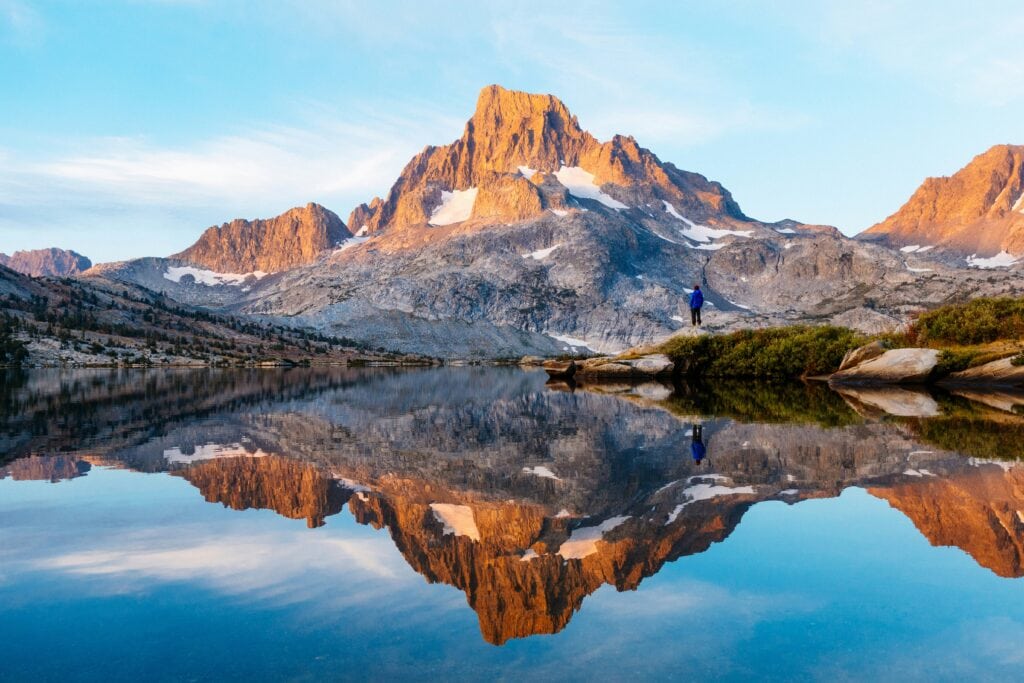
Top Adventure Hiking Trails to Discover
Adventure seekers can find a wide range of challenges and scenery on some of the most well-known trails in the United States. These routes offer everything from mountain passes to deep forests, making each experience unique and memorable.
John Muir Trail
The John Muir Trail runs for about 211 miles through California’s Sierra Nevada mountains. Hikers follow a path that passes through Yosemite, Kings Canyon, and Sequoia National Parks. Elevation gains are common, with peaks above 14,000 feet, so altitude is a big part of the challenge.
It’s known for its jaw-dropping views of granite cliffs, alpine lakes, and meadows. People come here to see places like Mount Whitney, the highest point in the contiguous United States. Most hikers take around three weeks to complete the whole trail.
Permits are required and can be hard to get, so planning ahead is needed. Long stretches between resupply points mean hikers must carry enough food and gear. The best season is usually July through September, when the snow has melted from the higher passes.
Appalachian Trail
The Appalachian Trail is a legendary east coast route that stretches about 2,190 miles from Georgia to Maine. It crosses 14 states and passes through roaring rivers, forests, and small mountain towns.
While many attempt “thru-hikes,” which can take five to seven months, others explore the trail for shorter sections. Hikers face rocky terrain, unpredictable weather, and many steep climbs. Wildlife such as black bears and deer are often seen along the way.
Shelters and campsites are available along much of the route, making planning easier. Most hikers start in spring for the best weather, but the trail is open all year. For more detailed information, check out this guide to the Appalachian Trail.
Highline Trail
The Highline Trail in Glacier National Park, Montana, is famous for views of mountain valleys and glaciers. From Logan Pass, hikers walk along narrow ledges and open meadows with wildflowers in summer. The route is about 11.8 miles one way if ending at the Granite Park Chalet or at The Loop.
This trail is not as long as others, but it is still a favorite due to sights like the Grinnell Glacier Trail and chances to see mountain goats and bighorn sheep. Some steep drop-offs require a good head for heights. Weather can change quickly, so travelers need to be ready for wind, sun, or even snow.
Most people come between July and September, since the trail can be snow covered early and late in the season. Shuttle buses help hikers access trailheads and finish points.
Wonderland Trail
The Wonderland Trail circles Mount Rainier in Washington State over a distance of about 93 miles. Hikers complete a full loop, experiencing old-growth forests, wildflower meadows, glaciers, and views of Mount Rainier from all sides.
Elevation gain is a key feature, with more than 22,000 feet of up and down throughout the loop. Most people spend about 10-14 days on the trail. There are designated campsites along the route that must be reserved with a permit.
Creeks and rivers must be crossed, and weather can include rain or snow even in summer. Late July through early September is the best time to hike, when snow bridges have melted and wildflowers are in full bloom. For more on other famous routes, see this guide to the best hiking trails in the world.
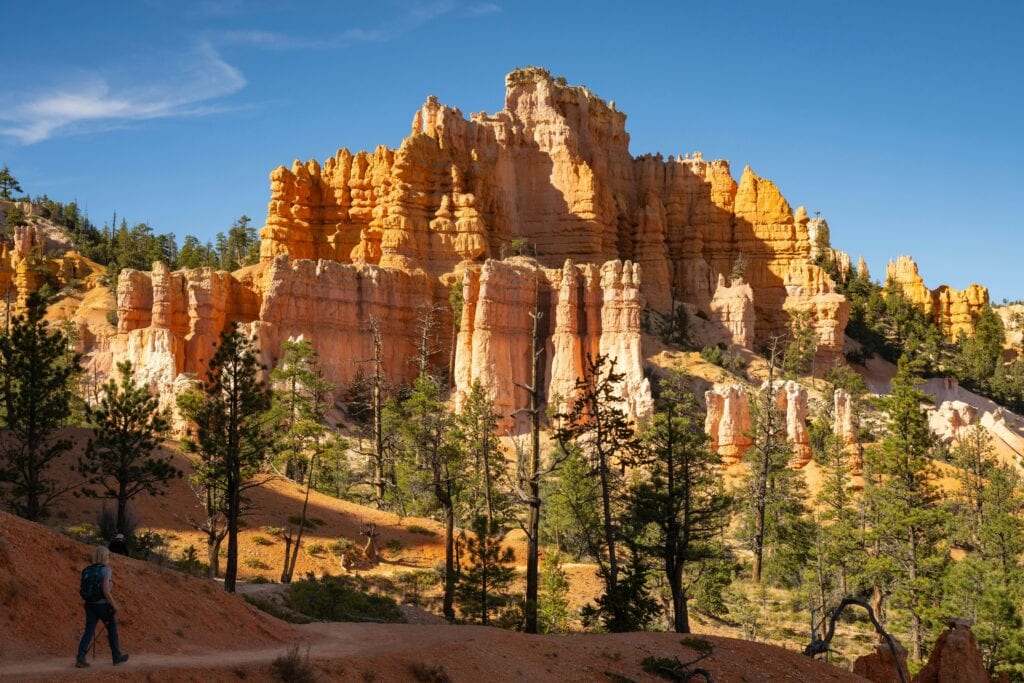
Unique Hikes and Signature Trails
Some of America’s best hiking destinations feature trails with memorable scenery, unique features, and a blend of physical and mental challenges. Each trail stands out for its landscape, required skill level, and the experience it offers adventure seekers.
Sky Pond Trail
Sky Pond Trail in Rocky Mountain National Park is considered a classic Colorado hike. It is about 8.5 miles round trip, gaining over 1,700 feet in elevation. The route passes Alberta Falls, then climbs steep switchbacks to The Loch, a beautiful subalpine lake.
One of the main highlights is the climb up Timberline Falls, where hikers must scramble beside a waterfall to continue. After the climb, the path leads to Lake of Glass before ending at Sky Pond, surrounded by jagged spires. Hikers can expect to see dramatic mountain views, wildflowers in summer, and wildlife like marmots and pikas.
Sturdy footwear, layers, and weather awareness are important, as sudden storms are common. Some compare the landscape at Sky Pond to the famous Emerald Lake route nearby.
Beehive Trail
The Beehive Trail is a short but steep and challenging route in Acadia National Park, Maine. It is only about 1.5 miles, but hikers climb iron rungs and ladders set into the granite cliff face. The granite scrambles and narrow ledges make this hike famous for its exposure.
Clear weather is necessary for safety because the rocks become slippery when wet. On clear days, the summit provides sweeping views of Sand Beach and the Atlantic Ocean. Hikers should have good footwear and a head for heights.
Beehive is a favorite for those who enjoy a bit of climbing without technical gear. For more intense climbs by iron rungs, the nearby Precipice Trail is an alternative, but Beehive is usually open when bird nesting closes Precipice in spring.
Fairyland Loop
Fairyland Loop is found in Bryce Canyon National Park, Utah. This trail covers about 8 miles and features both moderate distance and elevation gain. Unlike the busy main amphitheater, Fairyland Loop travels through quieter portions of the park filled with colorful hoodoos and odd rock formations.
The loop passes iconic spots like Tower Bridge and offers changing views of spires and windows carved by erosion. Elevation changes quickly, so hikers should be prepared for steep climbs and descents. Summer temperatures can rise, and there is little shade, so water and sun protection are key.
Because it’s less crowded than the Navajo Loop, Fairyland Loop provides a peaceful way to explore Bryce Canyon’s unique terrain. Hikers with more time can link the trail with others like the Hidden Valley Trail for added mileage.
Cascade Canyon Trail
Cascade Canyon Trail is a top choice for those visiting Grand Teton National Park in Wyoming. The trail starts at Jenny Lake, where many take a shuttle boat to save time and distance. From the lake, the hike passes Hidden Falls and Inspiration Point before reaching Cascade Canyon.
The trail then winds gently up the canyon along a stream, surrounded by steep Teton peaks. Distance ranges from about 9 to 14 miles round trip depending on the turnaround point, with moderate elevation gain. Moose, bears, marmots, and plenty of wildflowers are common on the route.
Hikers should carry bear spray and be alert to changing weather. The trail can be extended toward the Forks or linked with routes like the Hidden Valley Trail for a longer adventure. Cascade Canyon is popular for its scenery and easy navigation compared to steeper Tetons hikes.
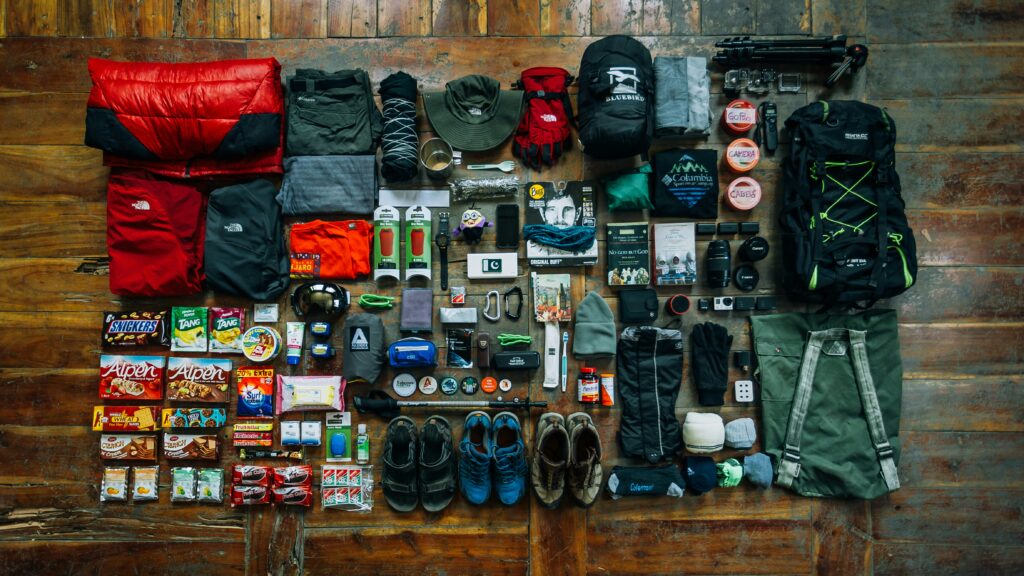
Planning Your Ultimate Hiking Adventure
Smart planning makes a hiking trip safer, more fun, and less stressful. Picking the right gear, staying aware of trail rules, and preparing for multi-day treks help hikers avoid problems and get the most out of their time outdoors.
Choosing the Right Hiking Gear
The choice of gear can make or break an outdoor adventure. A comfortable, sturdy backpack is needed to carry supplies, food, and a water bottle. Choosing the right size backpack prevents back or shoulder pain over long distances.
Hiking boots with good ankle support protect feet on uneven paths. Testing boots before the trip lowers the risk of blisters. Wool socks and moisture-wicking shirts keep hikers dry and comfortable.
Don’t forget a first-aid kit, navigation tools like a map and compass, and weather-appropriate layers. For long hikes, add a lightweight tent, sleeping bag, and portable stove. Packing only what is truly needed keeps a backpack lighter and hiking easier.
| Must-Have Items | Purpose |
|---|---|
| Hiking Boots | Foot protection |
| Backpack | Carrying gear |
| Water Bottle/Filter | Hydration |
| Weather Layers | Warmth and protection |
| First Aid Kit | Minor injuries |
| Navigation Tools | Stay on course |
Permits and Trail Regulations
Hiking in popular places often requires permits for safety and to protect the environment. Some destinations, like national parks or famous trails, limit hikers by giving out a set number of daily or nightly passes. Trails may have camping permits and rules to control the number of overnight stays.
Check websites ahead of time to get info on trail permits or regulations before your trip. Follow local rules including waste disposal, campfire bans, and marked trail restrictions. Breaking these rules can lead to fines or being asked to leave the trail.
Remember to respect wildlife and leave no trace. This helps protect the trail for others and keeps the outdoor adventure enjoyable for everyone.
Tips for Multi-Day Hikes
Multi-day hikes call for extra planning. Hikers must pack enough food, water, and supplies for several days. Dehydrated meals are light and easy to cook with a small stove. A good water bottle or filter is important, since not all trails have safe drinking water.
Sleeping gear, like a lightweight tent or bivy sack and a sleeping bag, keeps hikers safe from the weather at night. Planning daily distances, knowing campsite locations, and setting a steady pace help prevent exhaustion. Weather changes fast in the wild, so bring extra clothes and check forecasts.
Stay aware of your body’s needs. Pay attention to energy, hydration, and any pain or blisters. Taking rest breaks and adjusting the route if needed lets hikers finish the journey in good shape. Learn more steps for planning a hiking trip for safe and stress-free journeys.
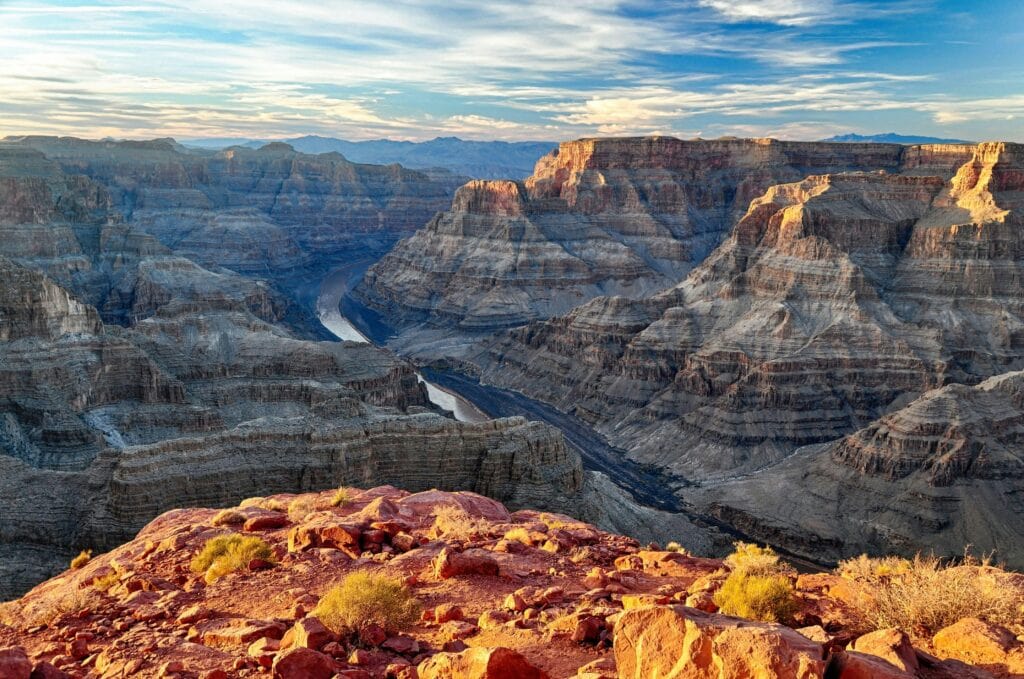
Frequently Asked Questions
Different hiking trails and destinations cater to varying experience levels, landscapes, and interests. Preparation, timing, and packing play an important role in ensuring a safe and enjoyable hiking trip.
What are the top rated hiking trails for experienced adventurers?
Torres del Paine’s W Circuit in Chile, the Inca Trail to Machu Picchu in Peru, and the Tour du Mont Blanc in Europe are popular among seasoned hikers. These demanding trails involve steep climbs, long distances, and multi-day trekking with elevation gains.
Kilimanjaro’s Lemosho Route in Tanzania and the Grand Canyon Rim to Rim hike in Arizona, USA, also attract advanced hikers looking for a challenge. Find details about more top hikes at Travellers Worldwide.
Which hiking destinations offer the most scenic vistas?
Some of the most beautiful views are found along the Kalalau Trail in Hawaii, the Milford Track in New Zealand, and the Monteverde Cloud Forest in Costa Rica. These trails offer dramatic landscapes, lush rainforests, and unique wildlife.
Hiking the Great Ocean Walk in Australia and the MacLehose Trail in Hong Kong provides striking coastal and mountain scenery as well. See more stunning hikes at Local Adventurer.
How can I prepare for high-altitude hiking adventures?
Gradual acclimatization is key to avoiding altitude sickness. Plan to spend extra days at higher elevations before starting your hike. Train by building cardiovascular endurance and hiking on steep terrain when possible.
Stay hydrated, avoid alcohol, and carry necessary medication like acetazolamide if recommended by your doctor. Learn more preparation tips from experienced hikers at Hiking with Shawn.
What are the essential items to pack for a multi-day hiking trip?
Bring a well-fitted backpack, appropriate clothing for changing weather, a sleeping bag and tent, and a water filtration system. Include extra food, navigation tools like a map and compass, a first aid kit, headlamp, and emergency supplies.
Layered clothing and reliable hiking boots are important for comfort and safety. For a full packing list, visit Outside Chronicles.
Can you recommend family-friendly trails that still offer a sense of adventure?
The Monteverde Cloud Forest Reserve in Costa Rica is suitable for beginners and families but offers a unique rainforest experience and hanging bridges. The Bay of Fires in Tasmania, Australia, features beautiful coastal scenery and moderate trails.
Well-marked paths and short distances in these areas make them accessible for kids while still feeling adventurous. Browse more options at Nutty Hiker Adventures.
What is the best time of year to embark on hikes in mountainous regions?
Most mountainous trails are safest and most enjoyable from late spring to early fall when snow and ice have melted. In places like Patagonia, the best hiking season is during their summer, December to February.
It’s important to check the local weather and trail conditions because some regions have short hiking windows due to weather extremes. Find out more at Adventure Tripr.
You Might Also Like:
If you enjoyed this post on Amazing Hiking Trails Destinations in the USA, you might also like: How to Backpack Across Asia Like a Pro, Ultimate Travel Guide for Thrill-seekers, Travel Safety Tips: Essential Advice for a Secure Trip
